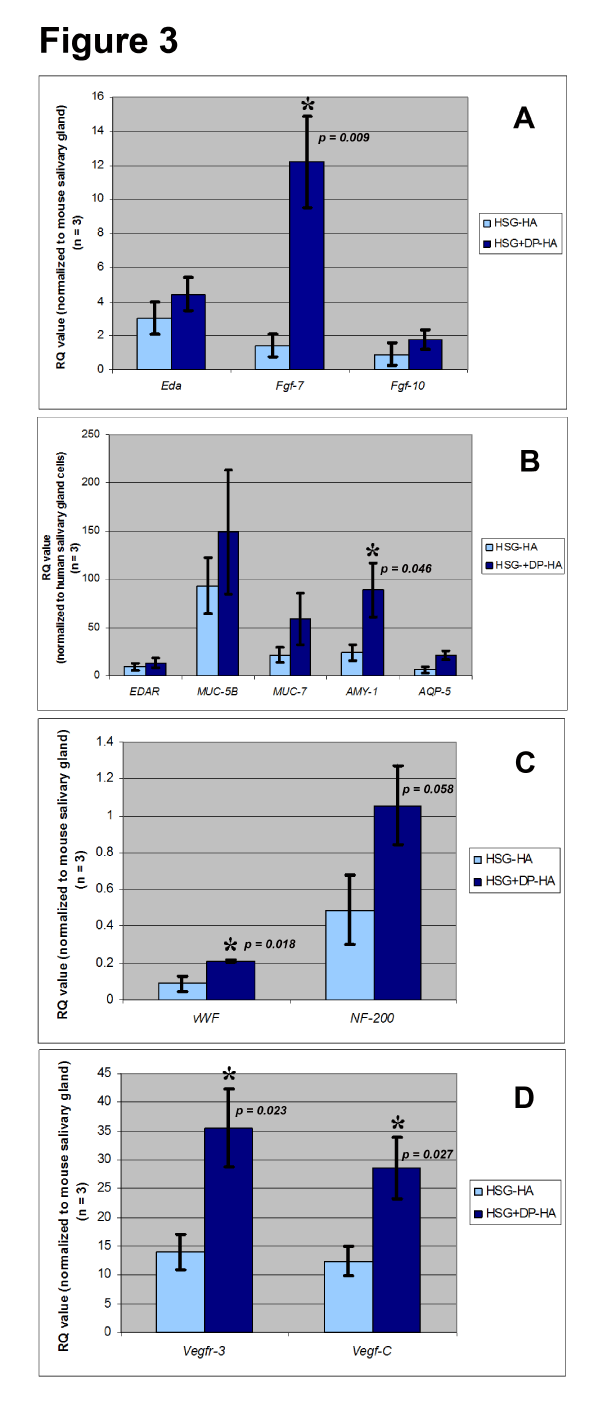
 |
| Figure 3: Co-transplantation of HSG and DPSC demonstrated high expression of murine neural crest-derived mesenchymal and human salivary gland genes. (A-D) Q-RT-PCR showed RQ (Relative Quantification) values demonstrating differential gene expression in HSG alone and HSG cotransplanted with DPSC. The transplanted HSG and DPSC in HA hydrogel scaffolds expressed higher levels of murine Eda, Fgf-7, and Fgf-10, human EDAR, MUC-5B, MUC-7, AMY-1, and AQP-5, as well as murine vWF, NF- 200, Vegfr-3, and Vegf-C. (A) HSG+DPSC particularly expressed significantly higher Fgf-7 expression (> 10 folds compared to HSG transplants alone). (B) The HSG alone and HSG co-transplanted with DPSC expressed higher level of EDAR, MUC-5B, MUC-7, AMY-1, AQP-5 (approximately >10-150 folds compared to undifferentiated human submandibular salivary gland cells). AMY- 1 was expressed significantly higher in the co-transplanted tissues. (C and D) HSG+DPSC expressed higher level of mouse vWF, NF-200, Vegfr-3 and Vegf-C compared to HSG transplants alone. RQ values (n= 3) were normalized by the expression of mouse salivary gland or human salivary gland cells. Mouse Gapdh or human GAPDH was used for the internal control. Student’s t-test calculated * p ≤ 0.05. Error bars represent ± SEM. |